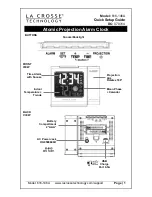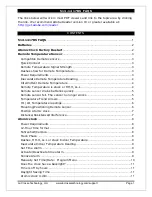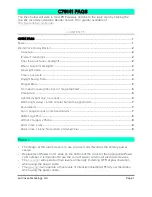
© 2002 Directed Electronics, Inc. Vista, CA
11
5. Cut the wire you suspect of being the starter wire.
6. Attempt to start the car. If the starter engages, reconnect it and go back to Step 3. If the starter does not
turn over, you have located the correct wire.
making your wiring connections
Before making your connections, plan how your wires will be routed through the vehicle. For instance, the yellow
ignition input, the red 12V constant input, and the orange ground-when-armed output (for the optional starter
kill relay) will often be routed together to the ignition switch harness. In order to keep the wiring neat and make
it harder to find, you may wish to wrap these wires together in electrical tape or conceal them in tubing similar
to what the manufacturer used.
There are two acceptable ways of making a wire connection - solder connections and crimp connectors. When
properly performed, either type of connection is reliable and trouble-free. Regardless of whether you solder your
connections or you use mechanical-type crimp-on connections, ensure that all connections are mechanically
sound and that they are insulated.
Cheap electrical tape, especially when poorly applied, is not a reliable insulator. It often falls off in hot weather.
Use good-quality electrical tape or heat shrink.
■
Never twist-and-tape the wires together without soldering.
■
Never use “fuse taps”, as they can damage fuse box terminals.
If you use tapping connectors such as 3M T-Taps (not to be confused with Scotch-Locks), avoid using them in
higher-current applications (constant 12V, ground, etc.). Some tapping connectors are inferior in quality and
should be avoided.












































